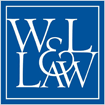Document Type
Article
Publication Title
Southern California Law Review
Publication Date
2023
Abstract
Political voting rights have become the subject of sharp legal wrangling in American political elections and the focus of headlines and popular debate. Less attention has focused on American corporate elections, where something similar has been happening: the last two decades have witnessed significant unsettling of basic shareholder voting rights, including laws and practices that were mostly stable throughout the twentieth century. Today, shareholder voting rights are in flux and, increasingly, in controversy. This Article connects the current moment of instability to the last significant era of change in shareholder voting rights—the nineteenth century—and brings historical context to a new era of dynamic change.
A small but potent literature has explored the historical evolution of nineteenth-century shareholder voting rights in corporate law, establishing that per-share vote allocations changed significantly over that century. This literature, which focuses on the shift from “democratic” vote allocations (one-person-one-vote and restricted voting) to “plutocratic” voting (one-share-one-vote), has treated vote allocations as the exclusive determinant of shareholder voting power. The literature has raised as many questions as it has answered, and it ultimately has failed to produce agreement among scholars or a cohesive narrative to explain how or why the modern framework for shareholder voting rights emerged.
This Article presents an alternative account of transformations in shareholder voting rights that tracks three evolving sets of legal rules. It shows how the voting-rights framework that was cemented by the end of the century—the framework that would go on to define twentieth-century corporate control—was determined by the interrelation of the three. One regulated the shareholder’s right to delegate votes (proxy voting), another set per-share vote allocations, and a third addressed the shareholder’s right to cumulate votes (cumulative voting). The Article shows why these three sets of rights must be understood as coactive and interdependent. It contributes new ideas to the longstanding debate about why American corporate law shifted to the rule of one-share-one-vote and concludes by returning to the present moment, arguing that shareholder voting rights have become newly unsettled through shifts along these same fault lines.
Recommended Citation
Sarah C. Haan, Voting Rights in Corporate Governance: History and Political Economy, 96 S. Cal. L. Rev. 881 (2023).

